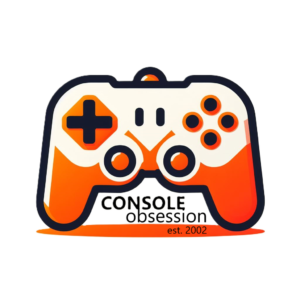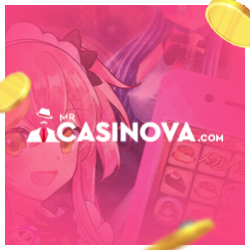Hyperballoid HD PS3 Review
When Breakout was released back in 1972, it caused something of a stir. It has impacted many people’s lives over the years, some of whom have been quite vocal about it. Bon Jovi was so bad at the game that when he got game overs, he couldn’t take it anymore. The game made Dave Grohl feel dizzy and sent him crazy, a little frayed around the ends. Miley Cyrus enjoys playing the game to get her parties started. And the Swing Out Sisters would have impossible dreams about winning it all.
Tenuous (or tedious) links aside, Hyperballoid is the latest in a long line of Breakout clones that have graced our lives since the blocky days of the early 70s. Long gone are the simple rows of rainbow-coloured blocks. Hyperballoid moves Breakout in to the 21st century.
For you young’uns out there who don’t remember Breakout, it was a very simple game. You have a flat platform, or “paddle”, at the bottom of the screen, which you can move from left to right or right to left. At the top of the screen there are rows of blocks which you break by bouncing a ball off of your paddle and on to the blocks. The trajectory that the ball takes off of your paddle can be varied. If the ball hits the middle of your paddle, it will travel straight up the screen, regardless of the incoming angle of the ball. If it hits one of the extreme ends, it will take a much more acute angle off of the paddle and can bounce off of the walls.
When the ball hits a block, the block disappears. The aim of the game is to clear all of the blocks and when you complete the objective, you move on to the next level. If you miss the ball with your paddle and it hits the bottom of the screen, you lose a life. Lose all of your lives and it’s game over.
And that’s about it. Pretty standard really, not much to work with, right? Well that’s where Hyperballoid comes in. Hyperballoid has a few tricks up its sleeve that sets it apart.
The biggest of these hooks is the varied and dynamic nature of the blocks and environment. So, for example, in one level, the blocks form the shape of a Viking ship which sails across the screen on a sea of blocks. In another level, the blocks comprise a space ship which flies around the screen. Some clusters of blocks will move when the ball hits them and end up scattered around the level. Others will be surrounded by indestructible blocks that only become accessible when another “trigger” block is destroyed. This dynamic element really adds to the tactical side of the game and makes each level distinctly unique and interesting.
Developing the strategic side, Hyperballoid introduces a large range of power-ups. When you break a glowing block, a coloured orb will fall towards the bottom of the screen. If you can collect it with your paddle then your paddle will grow, or the ball will speed up, or it will turn in to a ball of fire that breaks all blocks in one hit, or it will cause blocks to explode. One of the best power-ups splits your ball in to three. If you get a couple of these in a row then things really start to get crazy with multiple balls and power ups flying around the screen. There are however, some power ups that you don’t want to collect; some will shrink your paddle, or make the ball move in unpredictable ways. There is a huge range of power-ups and it really makes the game more exciting and varied, which inevitably adds to the longevity of the game.
You may have noticed the “HD” in the title of the game. Despite the simple nature of the game, Hyperballoid looks beautiful. The backgrounds really add character to each of the 100 levels and even the blocks themselves are varied and finely detailed. Much like a beautifully presented meal, you will always take a moment before you start each level to admire the craftsmanship and you will feel bad for having to destroy it.
So it all sounds very rosy at the moment. But there are a few almost game crippling flaws. The biggest problem with Hyperballoid is that the ball moves so incredibly slowly. At the start of a level when there are lots of blocks to hit this isn’t such a big problem. But when you have only a small number of blocks left, it can take an age to finish off a level. In this scenario a “warp level” orb will appear, that if you collect, will automatically end the level. But the fact that this power-up even exists means that the developers were aware of, but chose to ignore this flaw. And should you miss the power up, then you must continue to struggle through to the end of the level. This also means that the game is rather easy, even on Hard difficulty. The game can get rather crazy with balls and power-ups flying all over the screen, but even during these times I rarely lost a life. And god forbid should you accidentally pick up the ball slow-down power up towards the end of the level.
One potentially interesting feature is that Hyperballoid supports motion controls, so you can tilt the pad to move your paddle. This does sound good on paper, but the controls are so completely broken that they are unusable. The feature feels so much like a last minute tick-the-box tack on that it works against the game.
There is also no online support. For a game of this price, I wouldn’t expect multiplayer head-to-head modes to be supported, but there aren’t even online leader boards. Adding leader boards for fastest time and highest score for each level would add another level of competition to the game and help to increase its lifespan.
So Hyperballoid is almost great, but it has a number of flaws that keep greatness just out of reach. An option to speed up the game speed would be very welcome and would have added at least another one to the score. But for the casual gamer, at a price that is about the same as a pint of beer, Hyperballoid is very good value for money and will keep you happily entertained on a rainy afternoon or two.
7/10







